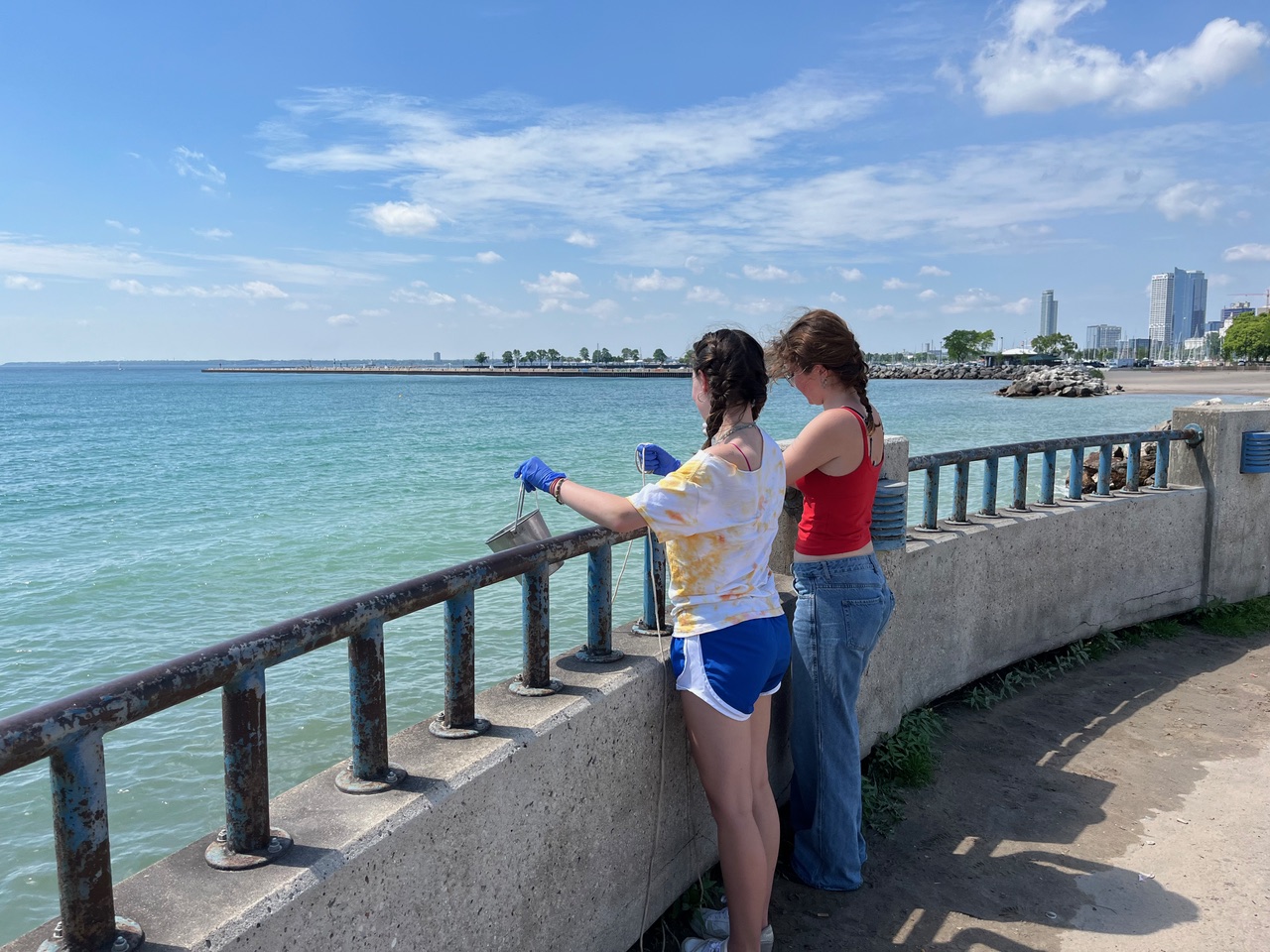Under the powerful eye of the confocal microscope, the evidence is incontrovertible. It’s right there before our eyes—or, in other cases, not there—in a splash of bright fluorescent green.
That green is a colorful artificial protein that indicates the presence of cells that form the outer layer of the heart (also known as the epicardium) of the common zebrafish embryo. And as research by Warren Heideman and Richard Peterson, professors at the UW-Madison School of Pharmacy, is showing, that green glow is a genetic indicator that reveals whether the embryo has been exposed to 2,3,7,8-tetrachlorodibenzo-p-dioxin (TCDD), a deadly dioxin produced as a contaminant in herbicides and by burning plastics.
To get a sense of just how powerful TCDD is, know that it’s found in Agent Orange.
Wisconsin Sea Grant is currently funding two Heideman and Peterson research projects that deal with dioxins and zebrafish. The first involves tracking the toxic responses in adult zebrafish that were exposed to sublethal TCDD doses as embryos. The second involves exploring TCDD’s role in causing a deadly condition called blue-sac syndrome in fish.
“Blue-sac syndrome is an edema of the heart sac,” explained Heideman, who, with Peterson, has been studying zebrafish for more than 15 years. “It’s really a sign of heart failure. In larger fish species where you have larger embryos, the sac is bluish. What will happen is the fish will die—they won’t recover from this situation.”
An earlier UW Sea Grant-funded project discovered that zebrafish embryos have a small window of sensitivity to the presence of TCDD—between 48 hours after fertilization to six days afterward. After 30 days, the adult zebrafish no longer respond to the presence of the toxin at all. This matches the period in which the epicardium normally forms.
Enter Jessica Plavicki, a UW-Madison postdoctoral fellow with some serious imaging expertise. Plavicki, who once thought she’d pursue a career in art, has brought her artist’s eye—and her expertise with the high-resolution confocal
microscope—to Heideman and Peterson’s lab. The results have been both scientifically fascinating and visually dramatic. By taking confocal images of zebrafish embryos that have and have not been exposed to TCDD, Plavicki is able to show clearly whether the epicardium is present or not, offering visual proof that there’s a direct connection between exposure and development.
Finding these markers of toxicity in zebrafish has multiple real-world applications. Heideman and Peterson’s work with zebrafish has identified and isolated the single gene that’s a direct target for TCDD—a gene named Sox9 that is also found in humans. It’s far less common, but humans who have defects with the Sox9 gene have the same types of problems that the zebrafish embryos do: issues with the heart, spinal development and sex reversal. Also like the zebrafish, humans with Sox9 issues don’t survive long.
The technique could also be used to gauge TCDD’s effects in a species like lake trout, a fish
that can’t be easily studied in the lab. Wildlife biologists could sample the range of sensitivity in other
fish species in potentially dioxin-polluted environments—instead of tackling the impossible task of
performing massive toxicology tests on every fish in the river.
“Our assumption is that at lower concentrations, the fish won’t be killed but will be hurt,” said Heideman. “At this point, we’re working on proving that.”
If sublethal doses of TCDD in the environment (researchers are thinking as low as parts per trillion) are affecting certain species’ ability to develop and reproduce, the impact to the food web could be severe.
“We’re worried about the wiping out of populations,” said Heideman. “Fish with reproductive incapacity don’t reproduce. You don’t get recruitment of young fish, and suddenly the fish are gone. We see this worldwide in a lot of populations. A lot of times it’s overfishing. But how do you know which is overfishing and which is chemical? We’re
trying to get data for that.”





